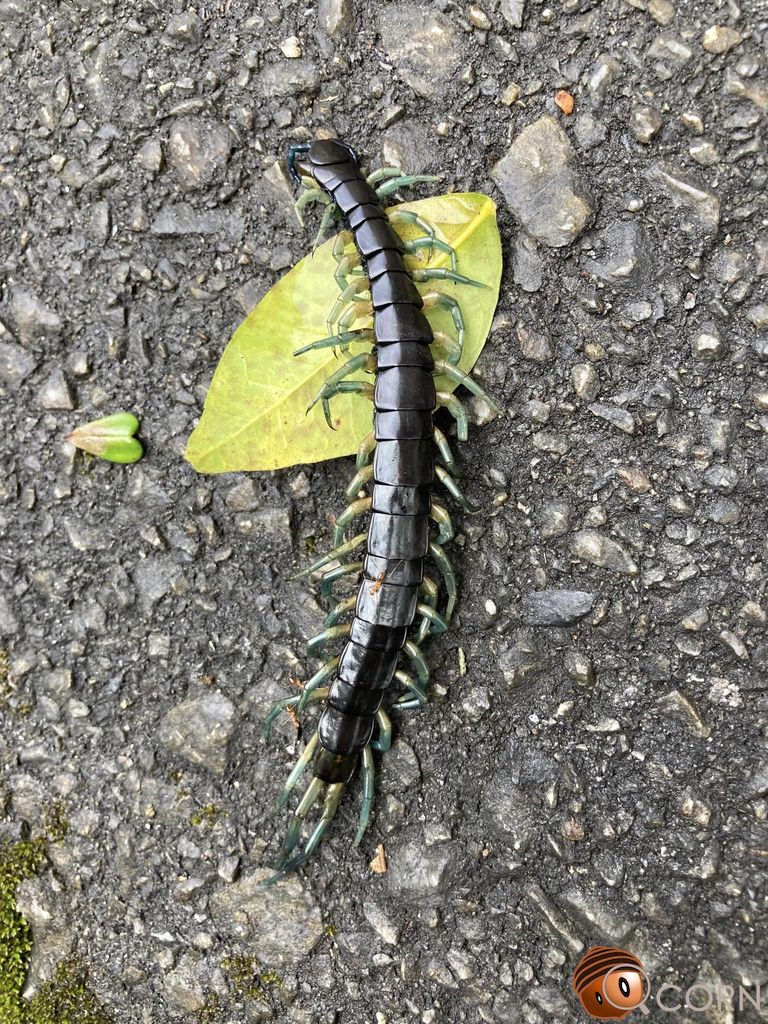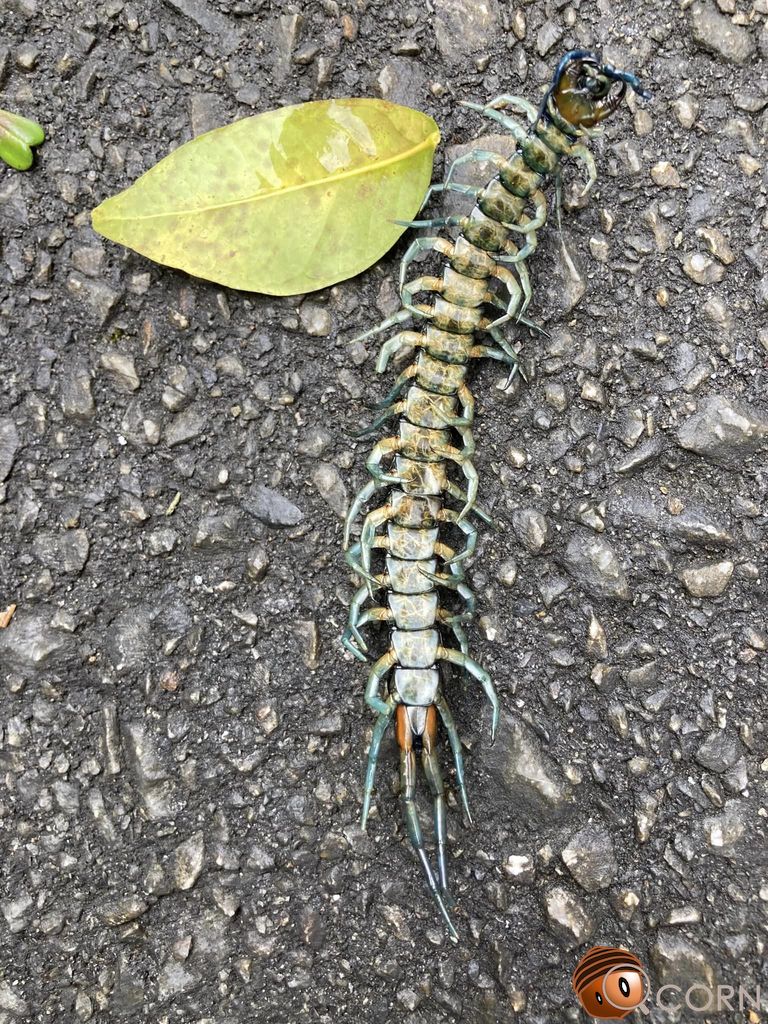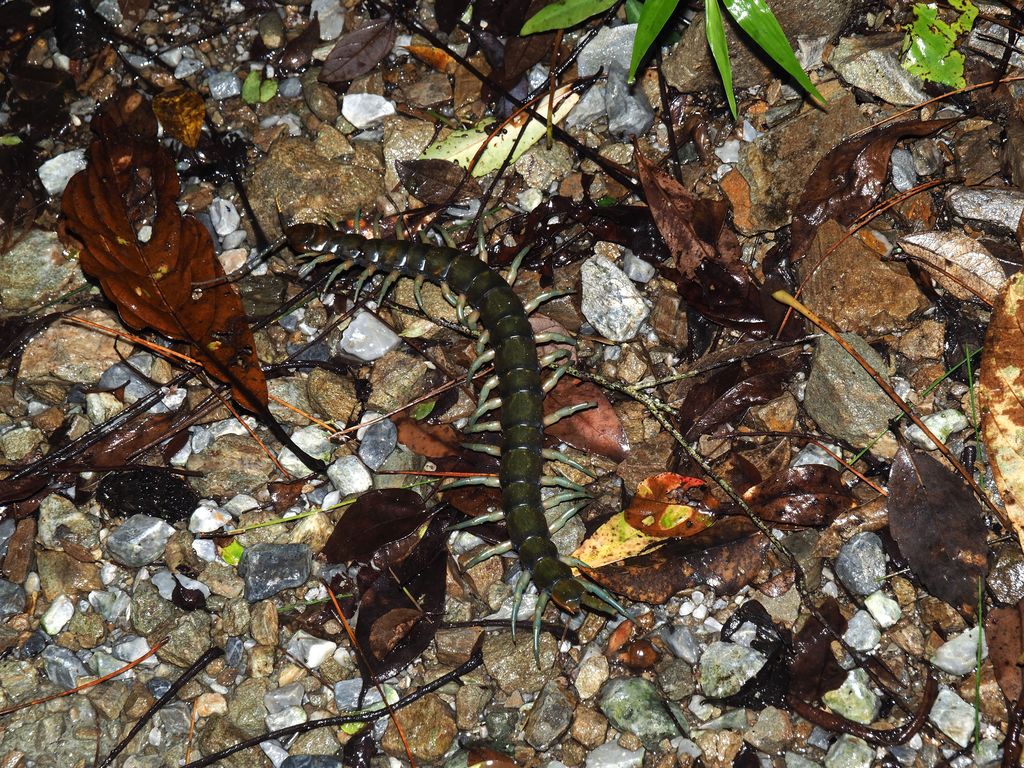Scolopendra alcyona
Japanese name: リュウジンオオムカデ
Chinese name: 琉神蜈蚣、青龍蜈蚣(TW)
English name: Halcyon Giant Centipede
Origin: Northern Okinawajima, Ishigakijima, Iriomotejima, Kumejima, Tokashikijima, Taiwan
This species was described as new in April 2021 ( Reference ), and it is the third known amphibious centipede species in the world. It inhabits stream environments and is known to dive into the water when threatened. It has even been observed preying on freshwater shrimps.
The species name alcyona derives from Alcyone, the daughter of the wind god in Greek mythology. After a happy marriage, she compared herself to Zeus and Hera, which angered the gods and resulted in her transformation into a kingfisher. The centipede’s bluish legs evoke the image of a kingfisher, which inspired the name.
The Japanese name “Ryujin Omukade” (琉神大百足) originates from a Ryukyuan myth in which a centipede entered the ear of a sea dragon god who was causing storms, causing the dragon god intense pain. A rooster then appeared and easily ate the centipede. Since then, the dragon god has been said to fear both centipedes and chickens. During the Ryukyu Kingdom era, centipede flags and images of chickens were displayed on ships to ensure safe voyages. Although the story refers to a “dragon god” (龍神), the kanji 琉 (Ryū) meaning “Ryukyu” is used instead due to its identical pronunciation in Japanese.




